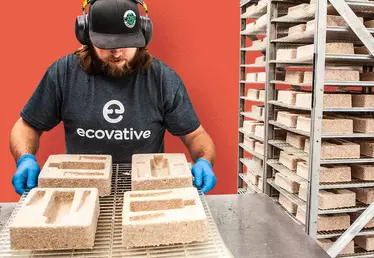

Hero banner custom title
Is it possible to make an eco-friendly smartphone?
5 min
We use it as an alarm clock, a camera, a diary, to keep in touch with our loved ones or to entertain ourselves. Since their initial launch by IBM in 1994, smartphones have become the most widely used connected object in the world, with 6.64 billion users. It is also a rapidly evolving technology. In fact, it is updated every 21 months on average. And yet, manufacturing a smartphone has significant environmental and social impacts, particularly in relation to the extraction of the minerals that make it up. So how can we continue to use them without feeling guilty? Is it possible to create an eco-responsible smartphone?
Anatomy of a smartphone
A closer look reveals that a smartphone is made up of more than 70 different materials, including about 50 metals. These include copper, zinc, aluminum and tin, but also precious metals such as gold and silver, as well as rare earths, the availability of which is not infinite.
“Smartphone manufacturing requires natural resources. We, as companies and consumers, have forgotten how precious and scarce these resources are, especially because of the very short lifespan of our devices”.
In many cases, the very extraction of these minerals is problematic. Between the depletion of resources, the destruction of ecosystems, and the pollution of water, air and soil, mining has serious environmental consequences. It also generates conflicts of use, as seen in Bolivia, Argentina and China, where the massive use of water to produce lithium compromises the survival of local populations. Not to mention the working conditions in the mines, where, according to UNICEF, more than 40,000 children are exploited to extract the cobalt used to make telephone batteries. “The extraction of these materials, often carried out in terrible working conditions and sometimes by children, has very serious social consequences”, notes Ioiana Luncheon.
This observation becomes even more serious when taking into account that the processing of these raw materials, the manufacture of electronic components, the assembly and use of smartphones also weigh in the balance. So, what should we do? Should we banish smartphones from our lives and return to the art of correspondence to limit our environmental and social impacts?
In search of sustainable smartphones
There are, in fact, alternatives. This is the case with the Fairphone, a sustainable, repairable and fair-trade phone launched in 2013 by the Dutch company of the same name. Concerned with reducing the ecological and social impact of the sector, its models are made with materials from ethical channels, with parts that are for the most part replaceable and easily dismantled to extend their lifespan.
It is therefore possible to optimize the entire production chain. However, this initiative should not be seen as a miracle solution either: “the very notion of sustainability varies from one person to another, which contributes, among other things, to making it impossible to produce a completely sustainable and responsible smartphone. But it is possible to do better than what already exists!”, adds Ioiana Luncheon.
Not to mention that, on the consumer side, there are also levers to make our relationship to smartphones more virtuous.
Hanging up on disposable smartphones
In light of the novelty appeal, supported by technological innovation and design, consumers can, to begin with, choose to offer a second life to second-hand models. The success of online sales platforms such as Back Market, which saw sales of reconditioned smartphones increase by 10% in France in 2020, proves that there is indeed room for this market.
Another lever consists of opting for easily repairable models in order to extend the life cycle of smartphones. The “10 Year Smartphone” initiative is part of this dynamic, by urging the European Commission to promote the right to repair in favor of more durable products.
Lastly, old models or used smartphones can simply be recycled. Yet they are still insufficiently recycled: “At the moment, the supply of recycled materials is not sufficient to cover the needs of the entire industry. We still need virgin materials”, explains Ioiana Luncheon.
A total of 1.4 billion smartphones are sold each year worldwide, but only 15% of used smartphones are recycled.
So, while there is no such thing as a 100% eco-friendly smartphone, the negative externalities associated with its production and use can indeed be reduced, to come as close as possible to this ideal model.











